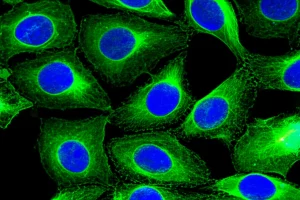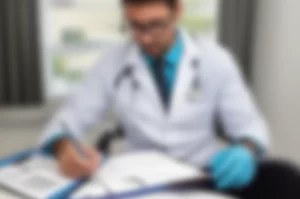Heart Repair Heroes: Why Saving Cells Might Be More Crucial Than Building Vessels in Acute Heart Attacks
Hey everyone! Let’s dive into something super important – fixing hearts after a nasty heart attack, or *acute myocardial infarction* (MI) if we’re getting technical. It’s a big deal globally, causing major damage and sadly, a lot of loss.
For ages, scientists and doctors have been trying to figure out the best way to help the heart heal itself. When blood flow gets cut off, heart muscle cells (cardiomyocytes) die, and that leaves a scar. The heart tries to repair, triggering things like inflammation, cell death (*apoptosis*), and building new blood vessels (*angiogenesis*) to restore flow.
Now, *angiogenesis* has always seemed like a prime target. Makes sense, right? Get more blood flow back to the damaged area, save more cells, help the heart pump better. And therapies aimed at boosting new vessel growth have shown promise.
Setting the Stage – MI and MSCs
Enter Mesenchymal Stromal Cells (MSCs). These are a type of adult stem cell found in various tissues – bone marrow, fat, umbilical cord, you name it. They’re pretty amazing because they can turn into different cell types, they don’t cause much of an immune fuss, and they can pump out helpful factors. This makes them a really hot candidate for fixing heart damage.
Clinical trials using MSCs for post-MI treatment have shown some good results – better heart function, improved quality of life. But here’s the catch: not all MSCs are created equal. Their properties can vary quite a bit depending on where they come from (tissue heterogeneity) and even from different donors of the same tissue type. This variation can lead to inconsistent results, which isn’t ideal when you’re aiming for reliable therapy.
This got researchers thinking: can we figure out which type of MSCs is *best* for a specific job, like treating acute MI? And what mechanism is actually doing the heavy lifting – is it boosting *angiogenesis*, preventing cell death, reducing inflammation, or something else?
The MSCs We Looked At
In this study, the focus was on comparing two specific types of clinical-grade MSCs: those from the umbilical cord (UCMSCs) and those from adipose (fat) tissue (ADMSCs). The idea was to see how their potential for *angiogenesis* stacked up and, more importantly, how they performed when actually used to treat acute MI in mice.
They did a deep dive into the cells’ genetic profiles using RNA sequencing to see what genes were active, especially those related to *angiogenesis* and *apoptosis*. They also ran various lab tests (like seeing how well they helped form tubes in a dish or grow vessels in a gel plug under the skin of mice) to check their *angiogenic* power *in vitro* (in the lab) and *in vivo* (in living things).
Then came the crucial part: injecting these MSCs into the hearts of mice right after inducing a heart attack. After 28 days, they checked the mice’s heart function using echocardiography and looked at the heart tissue under a microscope to see things like scar size, new blood vessel formation, and, importantly, how many heart cells were dying.
Angiogenesis – UCMSCs Seemingly Win (Initially)
Based on the initial lab tests and the gene analysis, the UCMSCs looked like the champions of *angiogenesis*. Their gene profiles showed more activity in pathways related to building blood vessels. In the lab, they were better at helping endothelial cells form tube-like structures. And in the gel plug test in mice, the plugs with UCMSCs had more new blood vessels growing into them compared to ADMSCs.
So, if *angiogenesis* was the main goal, you’d bet on UCMSCs, right? They seemed to have a stronger knack for promoting new blood vessel growth.

But Wait, Cardiac Function Tells a Different Story
Here’s where the plot thickens! When they checked the mice’s heart function a month after the heart attack and MSC treatment, both UCMSCs and ADMSCs helped improve things compared to the untreated MI group. They saw better left ventricular ejection fraction (LVEF) and fractional shortening (LVFS) – fancy ways of saying the heart was pumping more effectively. They also saw smaller scar sizes in the treated groups.
But *surprisingly*, the mice treated with ADMSCs showed *better* recovery in heart function and had *smaller* scars than those treated with UCMSCs. This was unexpected because the UCMSCs were the ones that were better at promoting *angiogenesis*!
They confirmed that both types of MSCs did increase blood vessel density in the heart tissue compared to the untreated group, but the UCMSCs still showed a higher density than ADMSCs. This disconnect between superior *angiogenesis* (by UCMSCs) and superior *cardiac function recovery* (by ADMSCs) suggested that maybe, just maybe, *angiogenesis* wasn’t the *most* important factor for recovery in this acute setting.
The Real Hero? Anti-Apoptosis!
If it wasn’t primarily about building new vessels, what else could it be? The researchers looked at cell death, or *apoptosis*, in the remaining heart cells. Losing cardiomyocytes is a major reason heart function goes downhill after an MI. Preventing this loss is critical.
They found that both UCMSCs and ADMSCs helped reduce *apoptosis* in the heart tissue near the damaged area compared to the untreated group. But, *crucially*, the ADMSCs were *significantly better* at preventing this cell death than the UCMSCs. They saw lower levels of proteins associated with *apoptosis*, like cleaved Caspase-3 and Bax, in the hearts treated with ADMSCs.
To back this up, they did experiments with heart muscle cells in a dish, mimicking the low-oxygen conditions of an MI. Again, both types of MSCs helped reduce cell death caused by hypoxia, but ADMSCs were superior.

Why Anti-Apoptosis Might Be King in Acute MI
These findings lead to a powerful conclusion, at least for acute MI: protecting the *existing* heart cells from dying seems to be *more important* for immediate functional recovery than building a whole new network of blood vessels. In the chaotic, low-oxygen environment right after a heart attack, saving the cells that are still alive but struggling might be the most effective strategy to limit damage and preserve pumping function.
The gene analysis hinted at this too. While UCMSCs had more genes related to *angiogenesis* turned on, ADMSCs showed downregulation of *apoptosis*-related pathways and higher expression of factors known to protect heart cells, like IGF-1.
Think of it this way: in the acute phase, the priority is damage control and stabilizing the remaining structure. Building new roads (*angiogenesis*) is important for long-term recovery, but preventing the existing buildings from collapsing (*anti-apoptosis*) might be the immediate life-saver.
What This Means for the Future
This study really highlights the importance of MSC heterogeneity. It’s not just about using *any* MSC; it’s about finding the *right* MSC for the *right* job at the *right* time. For acute MI, this research suggests that ADMSCs, with their strong anti-apoptotic punch, might be a better choice than UCMSCs, which are better at *angiogenesis*. This moves us closer to a concept of “precision medicine” for MSC therapy, where we screen and select cell types based on the specific needs of the patient and the phase of the disease.
Of course, science is always moving forward. This study focused on acute MI in mice and only compared two types of MSCs. There are other sources (bone marrow, dental pulp, etc.) and other phases of MI (chronic) to consider. Also, the exact mechanisms behind why ADMSCs are better at anti-apoptosis and UCMSCs at *angiogenesis* need more digging into.
But for now, this gives us a fantastic new insight: when it comes to acute heart attacks and MSC therapy, saving the cells you have might just be the most crucial step towards recovery. It’s a reminder that sometimes, the most effective strategy isn’t building something new, but fiercely protecting what’s already there.
Source: Springer







